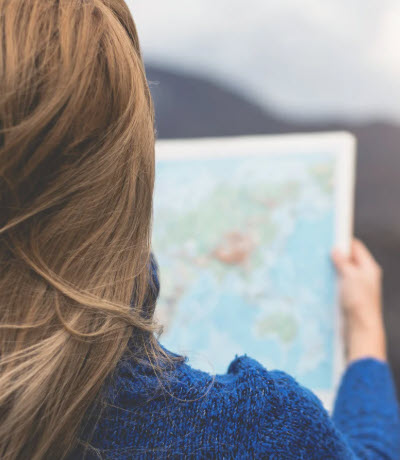Smart Travel Strategies for Wandering without an Itinerary
13 September 2025
The beauty of spontaneous city exploration doesn’t mean throwing all preparation out the window – it means doing just enough homework to wander confidently. There’s something magical about discovering a hidden café down a narrow alley or stumbling upon a local market that no guidebook mentions, but smart wandering requires balancing curiosity with common sense.
This guide will help you explore any new city safely and authentically, without the constraints of a rigid itinerary but with the confidence that comes from knowing how to read your surroundings and trust your instincts.

Before You Wander: Essential Prep for Spontaneous Exploration
Before you step out of your hotel or rental, spend 15 minutes researching the general safety landscape of neighborhoods within walking distance of your accommodation. Look up recent traveler reviews, check local news for any current safety concerns, and identify which areas locals recommend avoiding, especially after dark.
Download offline maps for your destination city and save your accommodation’s address in multiple languages before you lose reliable Wi-Fi. Set up location sharing with a trusted contact back home and establish a simple check-in protocol – even something as basic as “I’ll text you by 6 PM each day” gives both you and your family peace of mind. Most importantly, take a photo of your accommodation’s entrance, so you can recognize it when you return.
Essential pre-wandering downloads:
- Offline maps (Google Maps, Maps.me, or Citymapper)
- Translation app with offline capability
- Local transportation app (like the local taxi system, Uber, or Lyft)
- Emergency services numbers for your destination
- Your accommodation’s contact information in the local language
Pro tip: If you’re staying at a commercial lodging, ask the concierge or front desk staff for a business card. You can show that to a taxi or ride-share driver, and they’ll take you right there!
Reading a City Like a Local: Safety Signals and Red Flags
Learning to read an unfamiliar city’s safety cues abroad is the same skill you use when exploring unfamiliar neighborhoods back home – you naturally look for signs that tell you whether an area feels safe, right?
Positive safety indicators:
- Local families walking around, especially with children
- Busy restaurants and cafes with local-appearing customers
- Clean, well-lit streets with regular foot traffic
- Visible street addresses and clear signage
- Public transportation stops with passengers waiting
Red flags to watch for:
- An abrupt absence of other pedestrians
- Aggressive panhandling or persistent vendors
- Poor lighting combined with isolated streets
- Groups blocking sidewalks or acting territorial
If a neighborhood feels “off” and you can’t pinpoint why, it’s perfectly fine to turn around. Experienced travelers know that gut feelings often pick up on subtle environmental cues your conscious mind hasn’t processed yet.
Trust your instincts, but recognize the difference between reasonable caution and travel anxiety that might keep you from authentic experiences. Don’t let general nervousness about being in a new place prevent you from exploring areas that clearly show signs of being safe and welcoming to visitors. You could miss out on some lovely cultural experiences!
Smart Wandering Strategies: Stay Safe While Exploring Farther
The “expanding circles” approach is the safest way to explore any new city without a rigid itinerary. It looks like this: start within a few blocks of your accommodation and gradually venture further as you get comfortable with the area’s rhythm and layout.
This method lets you build familiarity with your surroundings while always knowing you can easily return to a safe space or your home base. It also helps you discover authentic neighborhoods that most tourists miss.
Each day, you can expand your circle a little further, using the previous day’s discoveries as stepping stones to new areas. Use these smart exploring tactics:
- Take note of major landmarks and street corners as you go
- Stick to areas with steady foot traffic
- Avoid isolated shortcuts, even if they look faster on your map
- Turn around if you don’t see people ahead
When asking locals for recommendations, approach people who are clearly engaged in normal daily activities – shopkeepers, restaurant staff, or families – rather than individuals who approach you first with unsolicited advice (often those are scam artists).
Frame your questions specifically (“Where would you go for coffee around here?” rather than “What should I see?”) and ask more than one person to get a consensus before heading somewhere unfamiliar. If someone’s recommendation feels pushy or includes an offer to guide you there personally, seek other opinions.
When to Retreat and Regroup
Knowing when to call it quits and head back to familiar territory is just as important as knowing when to keep exploring – it’s a skill that separates confident travelers from those who end up in uncomfortable or dangerous situations.
There’s no shame in turning around when conditions change, and experienced wanderers always have an exit strategy.
- Anytime you feel lost and can’t identify any familiar landmarks – that’s a good time for a cafe break and even a call to take you home
- Anytime the character or ‘feel’ of the surrounding area changes dramatically and feels negative
- Anytime you encounter persistent followers or aggressive behavior
- When daylight is fading and you’re farther from home base than planned
- Anytime your phone battery is low
Pro tip: Experienced travelers carry small devices that can quickly charge up their phone battery when it starts to drain down. Find one that works for you and carry it always. Make sure it and your phone are fully charged before you leave for a day of exploring.
Damian Tysdal is the founder of CoverTrip, and is a licensed agent for travel insurance (MA 1883287). He believes travel insurance should be easier to understand, and started the first travel insurance blog in 2006.
